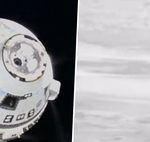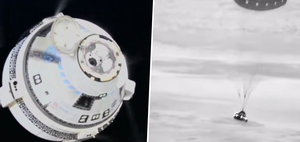One of the most outstanding tasks of the industrial processes of factories is competitiveness, it is through benchmarking that the continuous systematization of its processes, products and services is achieved.
Now, when a future projection is made of the factory tasksyou cannot leave aside the interesting challenge of labor and its technical domain, as ethical conflict.
So, we could not imagine the factories of the future, far from an overwhelming wave of digitization and technologyIn fact, in order to know the factories that are nearbyonly Google Mapswill make its correct location possible.
Let’s look at some ethical and technical training considerations that will apply to the proper functioning of the factories of the future.
Five demands for the factories of the future
radical transformationis what is happening and will continue its course in a world of so much technological, digital stimulation and social interconnection at a distance.
He manufacturing sectorrequires openness to such processes of change.
1. Process Optimization
Increase the efficiency, quality, flexibility and competitiveness of the production operationsis the central objective of any action that tends to optimize processes in factories.
A critical element to consider is the AIwhich allows the optimization of production processes through the analysis of large volumes of data.
To do this, sufficient technical knowledge and mastery will be required for the exploitation and non-use of resources.
So, the formation, training and willingness and openness to the unknown, It must be the guide of management.
2. Flexibility and Customization
Management of various lines of production and adaptation to the constant changes in the market, are necessary to achieve better competitiveness.
It is from the AIwhich can be design flexible processes, broad and according to the specificities of the type of production.
Likewise, the assessment of production time will be necessary for the large scale manufacturing.
3. Cost Reduction
Every day we aim to support better use of resources, it is not only about natural resources and the variety of conditions for their use and carbon footprint reduction but rather, the implementation of intelligent systems.
With AI, it undoubtedly contributes to the significant reduction of operating costs of both resources (minimizing material waste) and, reducing the margins of errors.
4. Integration and Connectivity
Monitoring the performance of the operational assistance of human resources, in addition to the innovation of efficient methods for greater productivity and profitability, are clear intentions on which the Artificial intelligence.
When you make way for integration and greater connectivity, you are guaranteeing future projection, cost reduction, compare competitive indicators, identify strengths and weaknesses among others.
5. Product Quality
Complying with quality standards is one of the requirements of the imposed regulations, in addition to representing increased credibility in the final manufacturing product.
Assume that quality control could be more optimized away from the AI It is really a mistake; Therefore, every day the standards for staff training are based on cutting-edge technological programs.
Key elements of the new factory model
To detail:
- Microfactories: Model with local facilities, which contribute to reducing advertising costs
- Sustainability: Use of renewable energy efficiently
- Collaborative Robotics: Robots perform repetitive, high-risk tasks
- Augmented Reality (AR) and Virtual Reality (VR): Helps reduce downtime
- Internet of Things (IoT): Prospects for possible risks
- Customization at Scale: Market segmentation and production
- Advanced Cybersecurity: Greater protection of digital assets











![[Img #73955]](https://thelatestnews.world/wp-content/uploads/2024/09/The-factories-of-the-future.jpg)



Add Comment